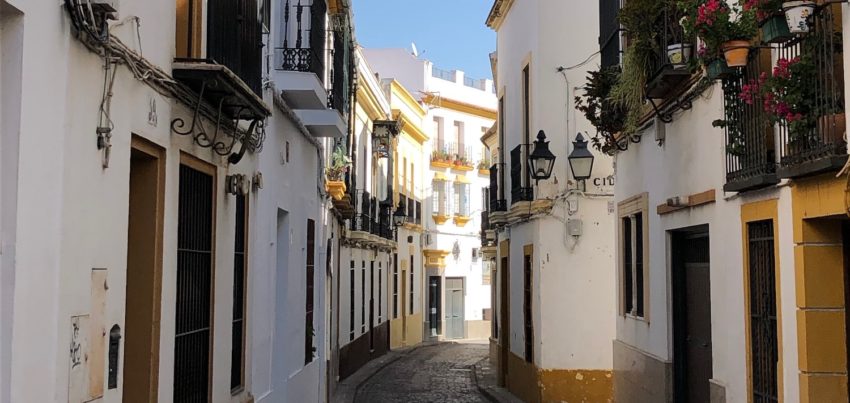Visiting Cordoba is like visiting an old friend. It’s a recognisably Andalusian city with its cobbled alleys and white-washed terraces highlighted in reds and ochres.
Like Seville and Jerez, Cordoba has an historic heart with obvious Roman foundations and a street plan that reflects the medinas of Arab cities. There’s an atmospheric Jewish district of narrow, winding streets, plus countless Christian churches that were usually built on the foundations of mosques built by the region’s Arab rulers from the 8th century onwards. Cordoba’s UNESCO World Heritage old town is one of the largest in Europe, an endless maze of picturesque scenery and charming houses with balconies and courtyards. It’s just a shame there’s so much dog shit everywhere.
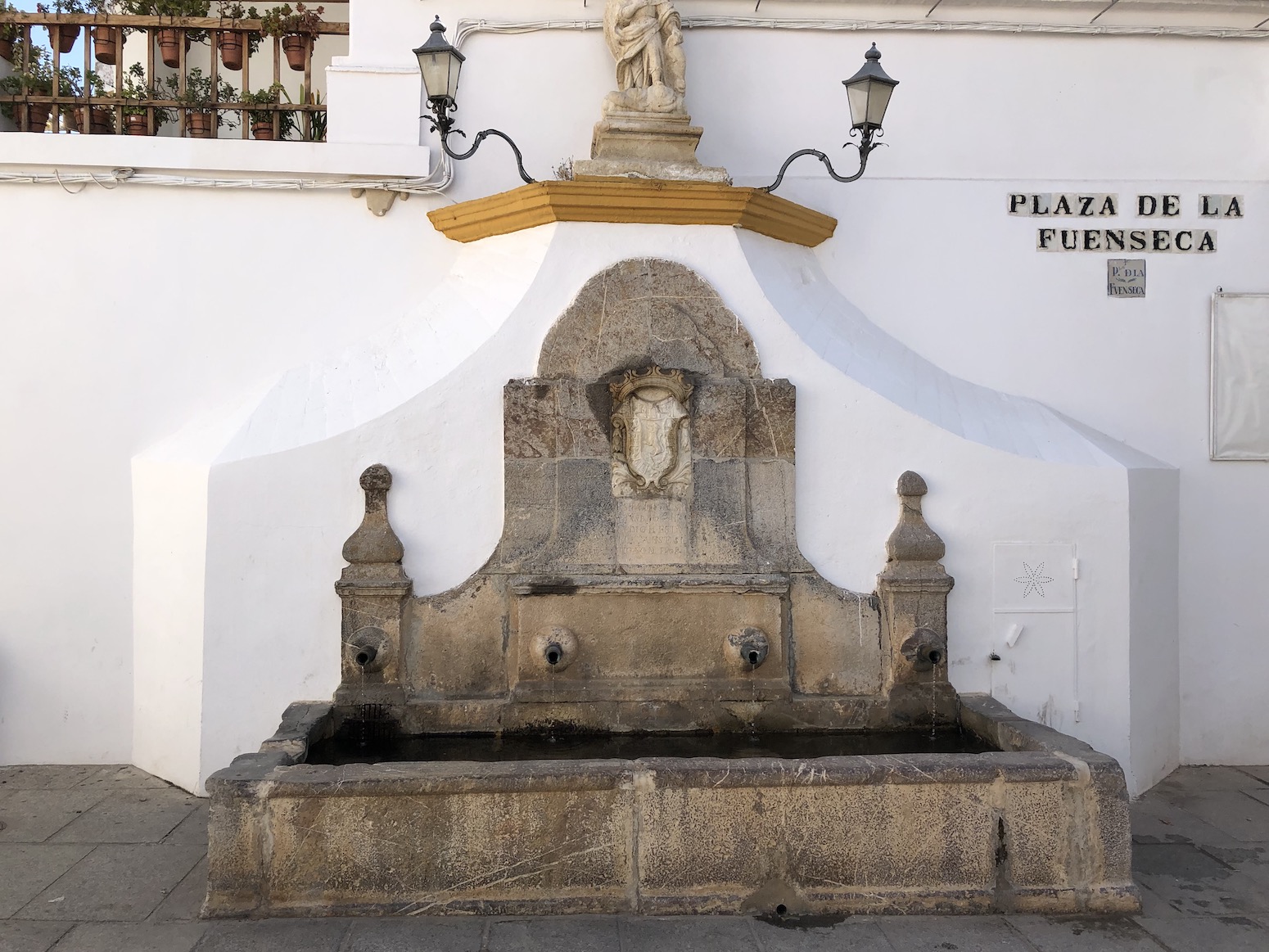
Beyond the old town is the more modern city of broader streets, apartment blocks, public squares and shops. This is the Cordoba for locals, away from the tourist throngs that surround the grand mosque and cathedral known as the Mezquita, the souvenir shops and restaurants that target an international audience. We spent much of our stay exploring the old town as well as the new in the intense heat, finding shade where we could and stopping for refreshments en route.
Saturday was busy in and around the Mezquita but reasonably quiet as we went out for a walk to the Palacio de Viana on the Sunday morning of our stay. This handsome mansion dates from the 15th century and is famous for its 12 colourful patios or courtyards. On the way we stopped at the Plaza de Capuchinos, full of historic, gleamingly white religious buildings and a famous cross. Some of the buildings are now a luxury hotel but there’s only so much religion we can take so we trudged on as the temperature climbed.
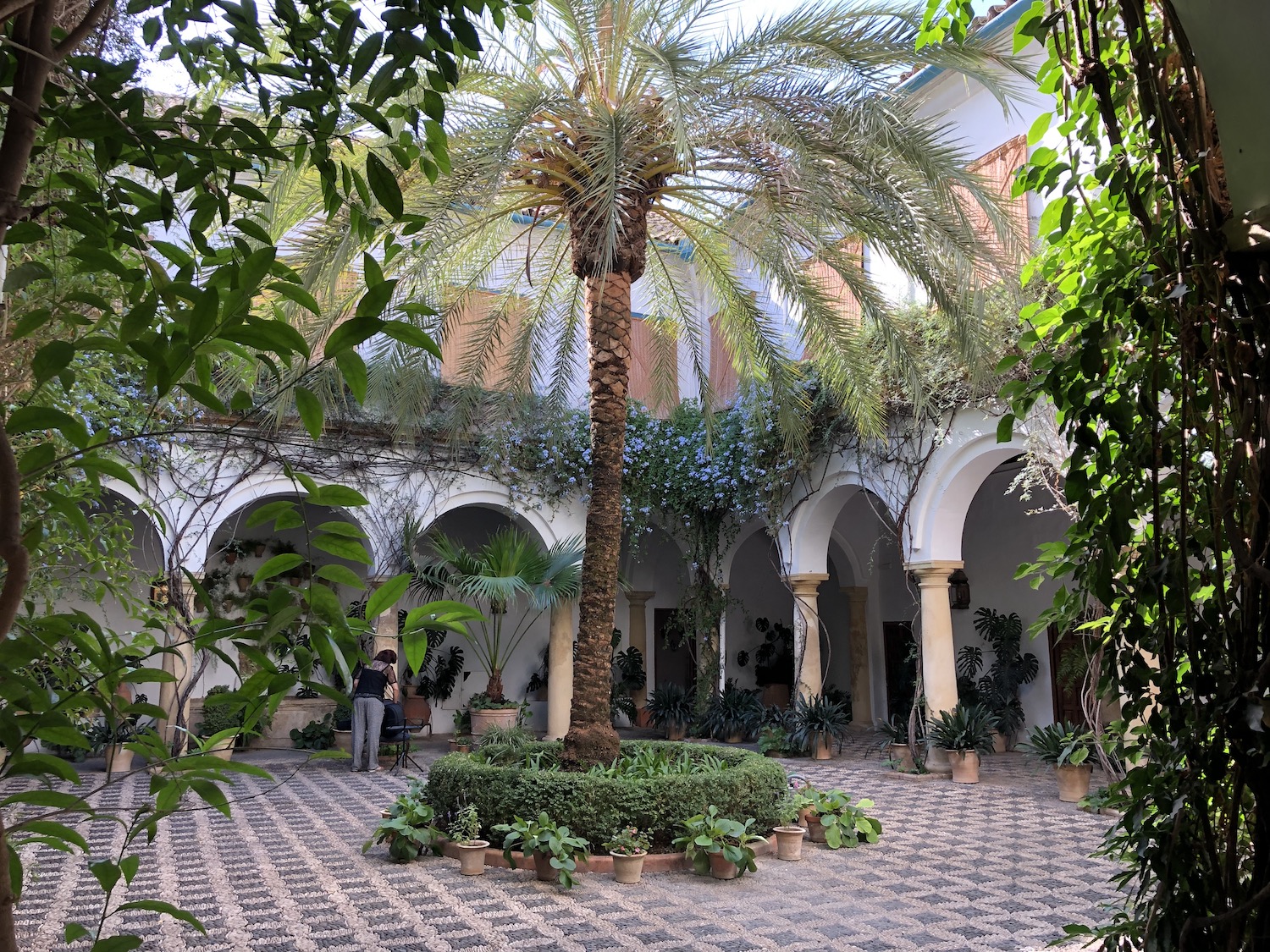
The Palacio de Viana is, in its own way, as memorable an attraction as the Mezquita. The house may be more than 500 years old at its heart but has been much extended over the years and combined with a neighbouring property. Home to aristocrats who served the state and befriended the royals, it was handed to a bank and their charitable foundation by the last childless member of the family in 1980.
We went on a guided tour of the house, which included rooms that reflected a wide variety of periods and tastes, full of paintings and tapestries, embossed leatherwork, fine porcelain and archaeological discoveries. I’d liked to have known more about the people who called the house home but that’s always the case with these tours – the human interest angle is missing too often.
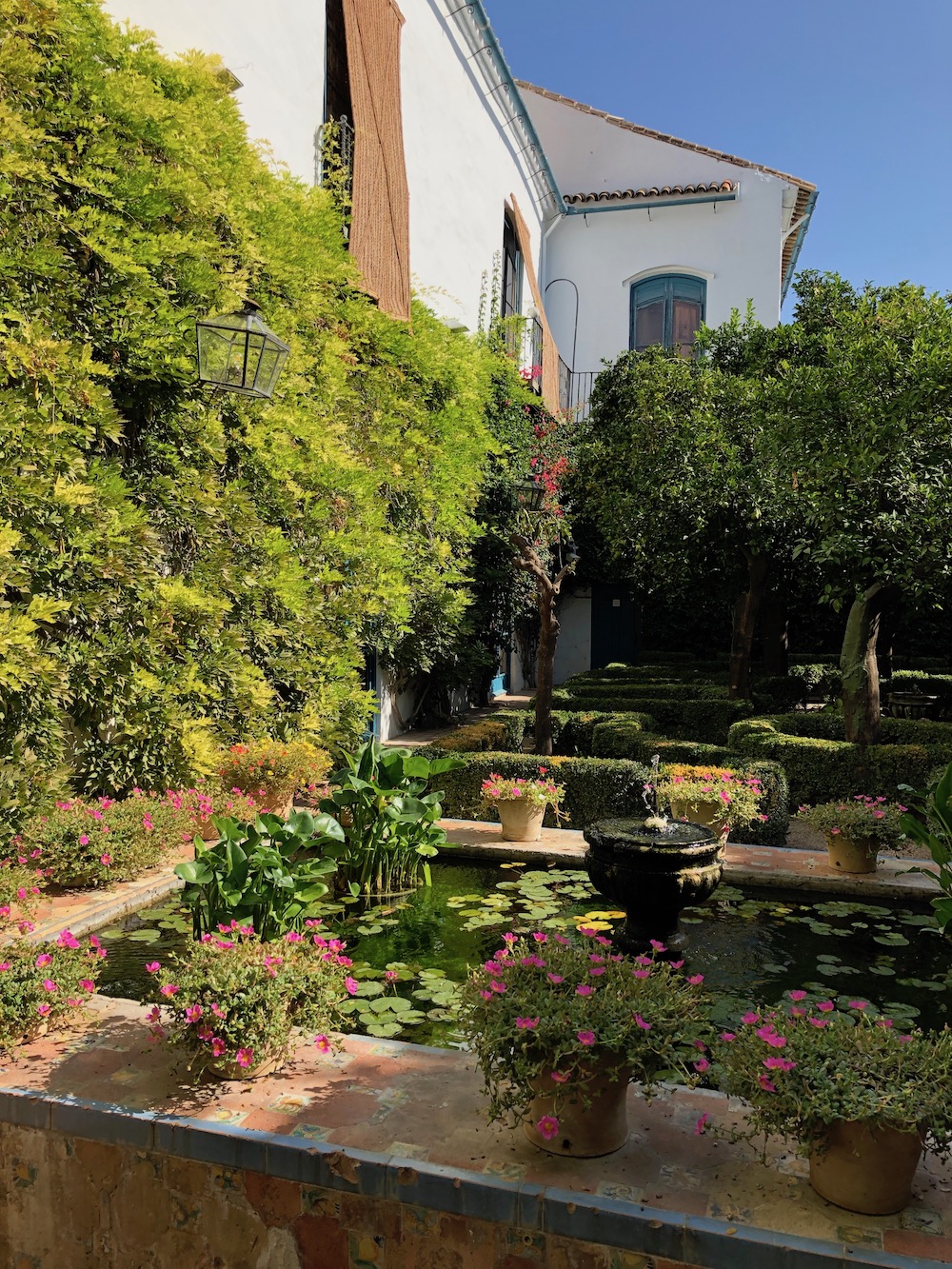
The best thing about Viana is not the warren-like interior but the gardens, which are composed of 12 gorgeous patios. These are a typical feature of homes in this part of Spain, inspired by Roman and Arabic traditions. They vary in size and drama but their overall impact is magical and, for a fan of gardens and gardening, truly inspirational. The patios have ponds and delicate fountains, tropical palms and colourful perennials, benches for contemplation and shade. The scent of jasmine hangs in the air, as it does over much of Cordoba, while trimmed cypresses add structure. We did the circuit a couple of times to get the most from our visit and stopped briefly at one courtyard where a group of actors and singers were performing something unfathomable.
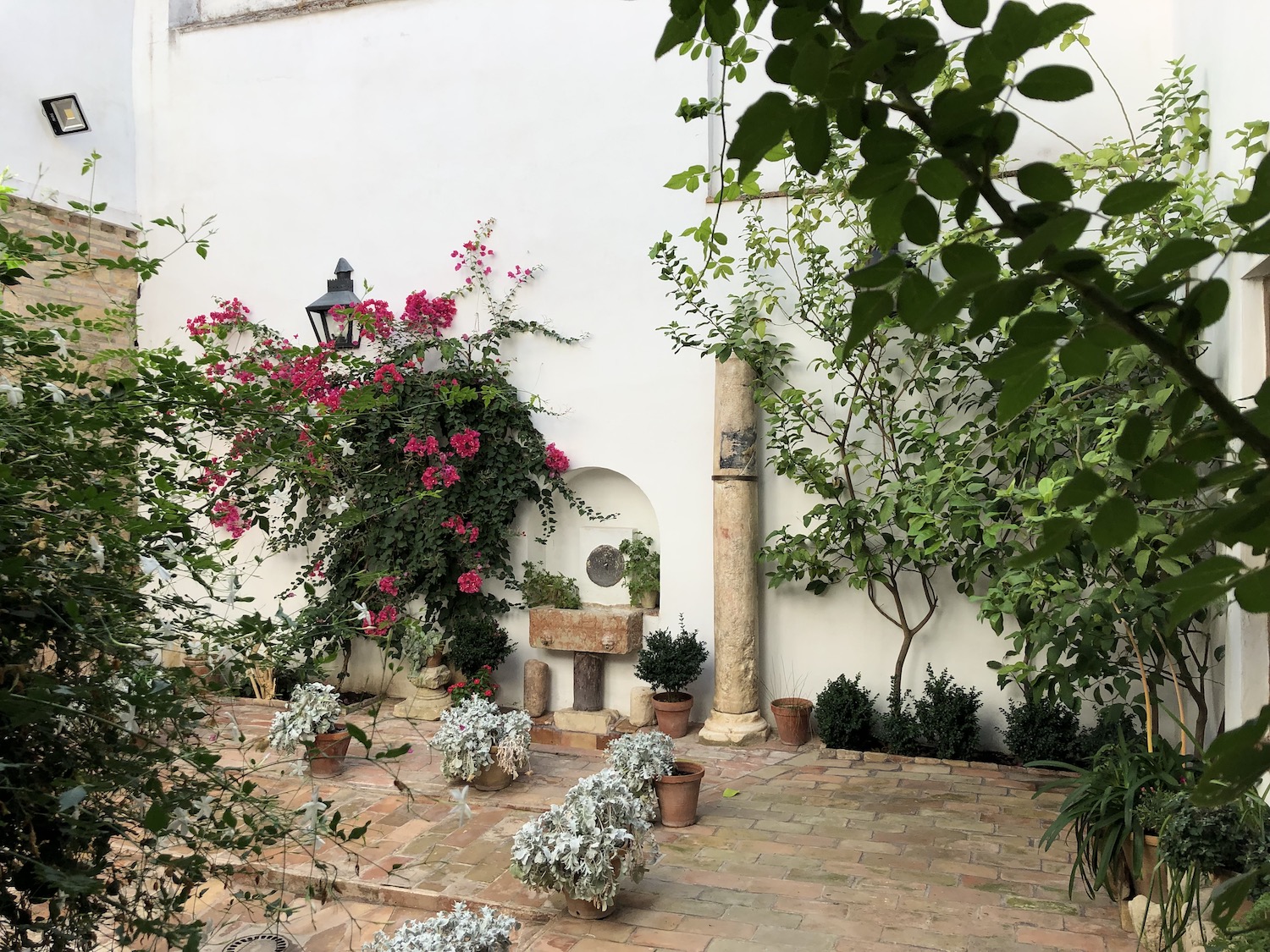
In the challenging heat we moved on, stumbling by chance on a much more modest medieval house by the name of La Casa de las Cabezas. Recently restored, it’s also built around several attractive, sheltered patios while various photos displayed throughout show just what a decrepit state it was in before work was carried out on the building. In the cellar is an old Roman cistern and elsewhere are the cool living quarters. Beside the house is a narrow lane that’s at the centre of a legend which has something to do with seven men trying to free a hostage being held in the house but who ended up being beheaded for their efforts. Fortunately their remains have long since gone…
Walking on, we discovered Cordoba’s answer to Madrid’s Plaza Major, the Plaza de la Corredera. Other than some interesting architecture, a few antiques stalls and a modest market, it has little to offer. So we carried on, passing through a stretch of the old city walls to find the Victoria Market, which is situated in the oldest remaining pavilion from the 1877 Cordoba Fair. Much like the San Juan Gastronomic Market in Palma, it houses a collection of bars and food stalls selling local and international dishes that visitors can pick and choose while supping on a cold beer or a glass of wine. We had lunch, including langoustines and croquettes, before returning to the hotel and a few hours by the pool.
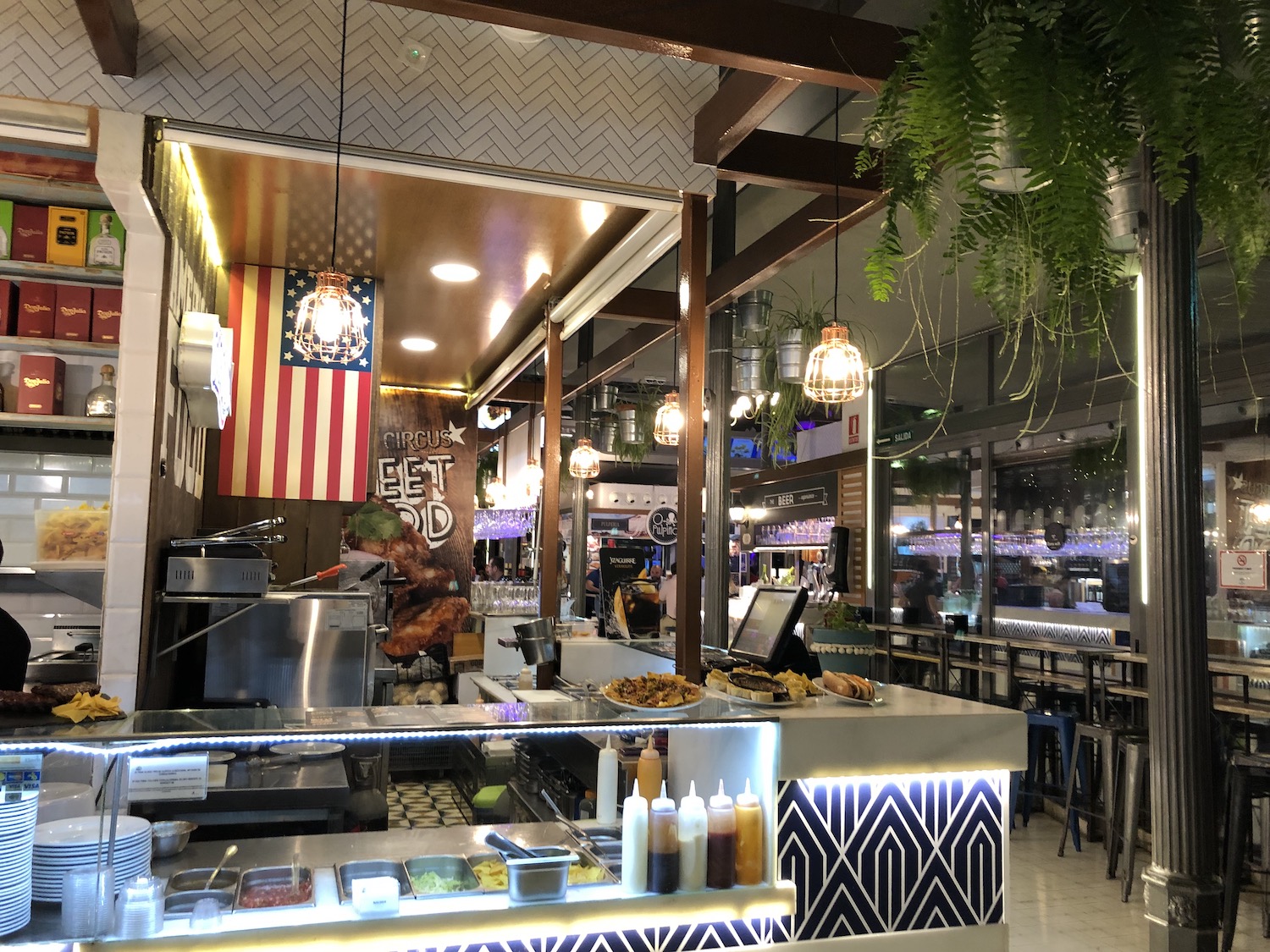
The evening saw us back at the Victoria Market, so impressed were we, and this time it was busier and buzzing. We treated ourselves to some Arabic dishes, which seemed only fitting, some Mallorcan snacks and other tapas. Overall the food in Cordoba had been very good indeed, our diet rich in seafood, anchovies either salted or in vinegar, cured meats and the thick cold soup Salmorejo. The beer flowed on that warm evening, our last in the city. Our Andalusian adventure would continue in Granada…

